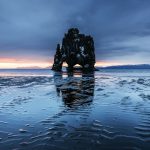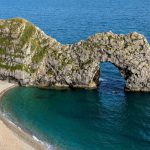When the sun dips below the horizon and the stars start to twinkle, there’s nothing quite like gathering around a warm, crackling campfire. But while the allure of the campfire is undeniable, it’s important to remember that fire is a powerful and potentially dangerous force. It requires respect and care to ensure everyone’s safety and the protection of the beautiful outdoor spaces we all enjoy. In today’s article, we’ll guide you through the best practices for setting up a campfire in a UK forest, emphasising the importance of doing so responsibly and with respect for the environment.
Choosing the Right Area
Your choice of campfire site is crucial in preventing unwanted fires and minimizing your impact on the forest ecosystem. When scouting for a location, look for an area that’s well away from trees, bushes, and other vegetation. You should also look for areas where the ground is bare and free of leaves, as these can easily catch fire. Keep in mind, it’s best to use existing fire pits if they’re available, as these are designed to contain fires and prevent them from spreading. If you must create your own fire pit, do so in a responsible manner and make sure to fully extinguish your fire and rehabilitate the area before you leave.
Additional reading : How to choose the best campsite in the UK for a photography retreat?
Preparing the Fire Pit
Once you’ve chosen your site, the next step is to prepare your fire pit. Start by clearing a space about 2 meters in diameter, removing any combustible materials such as dry leaves, grass, and small twigs. This area will act as your ‘fire break’, preventing the fire from spreading to the surrounding forest.
Next, dig a shallow pit in the center of the cleared area. The pit should be about 30 cm deep and wide enough to accommodate the wood you’ll be using. Line the pit with rocks to insulate it and reduce the chance of the fire spreading.
Also read : What are the top tips for camping near UK national landmarks?
Selecting the Right Wood and Tinder
The key to a good campfire lies in the selection of wood and tinder. Dry, dead wood is the best fuel for a campfire. Avoid using green or wet wood, as it will produce a lot of smoke and is more difficult to light.
The size of the wood you choose is also important. Start with small pieces of ‘kindling’ to get the fire going, then gradually add larger logs to build up the heat. Remember, it’s not about creating a bonfire – the goal is to have a manageable, controlled fire that provides warmth and light.
Tinder is any lightweight, easily combustible material that can be used to start a fire. Dry leaves, grass, twigs, or even newspaper can work. However, a dedicated fire starter or firelighter is often the most effective and reliable option, especially in wet conditions.
Lighting and Maintaining the Campfire
With your pit prepared and your wood and tinder selected, it’s time to light your fire. Start with a small pile of tinder in the centre of the pit, then add your kindling, building it up in a ‘teepee’ shape to allow air to circulate and feed the fire. Once the kindling is burning brightly, you can start adding larger logs.
Remember, a campfire is not a ‘set and forget’ activity. It requires constant monitoring to maintain a safe, controlled burn. Never leave a campfire unattended – it only takes a moment for a fire to get out of control.
Extinguishing the Fire
At the end of the evening, or when you’re ready to leave your campsite, it’s crucial to properly extinguish your campfire. Use water to douse the fire, stirring the ashes to ensure all embers are extinguished. If water is not available, use dirt to smother the fire.
Once the fire is out, touch the ashes with the back of your hand to ensure they’re cold. If any heat remains, continue adding water or dirt and stirring until the ashes are completely cool. Before leaving, restore the site as much as possible to its original condition.
The campfire is a beloved tradition of outdoor enthusiasts. By following these best practices, you can ensure that your campfire is not only a highlight of your trip, but also safe and environmentally friendly.
Campfire Cooking Safety
When you have a fire going in the wilderness, it’s tempting to harness its heat for cooking. This is a wonderful part of the camping trip experience, but it’s crucial to do so safely and responsibly. Never use a fire pit for cooking that is not specifically designed for that purpose, as it can lead to uncontrollable fires and cause damage to the forest ecosystem.
If you plan on campfire cooking, you’ll need to prepare a separate fire area for this task. In this section, we will provide some best practices for safe and efficient campfire cooking.
Start by setting up a fire site, preferably using an open fire pit or a designated fire grate if provided by the forest school or campsite. Ensure that the fire area is flat and stable, free of any flammable materials and at a safe distance from your tent or sleeping area.
When it comes to fueling your cooking fire, kiln dried wood is an excellent choice. Kiln dried wood ignites quickly, burns cleanly, and provides a steady, consistent heat, making it ideal for cooking.
When lighting the fire, adopt the same principles mentioned earlier. Use a reliable fire starter or firelighter and build the fire gradually, starting with small pieces of tinder and adding larger logs as the fire grows.
While cooking, keep the fire under control. Never leave your cooking fire unattended and always keep a bucket of water or a fire extinguisher nearby, just in case.
Once you’re done cooking, remember to extinguish the fire properly. Use water or dirt to smother the fire, check the ashes for residual heat, and restore the fire area to its original condition, leaving no trace of your activities.
A Safe and Memorable Experience
Setting up a campfire in a UK forest can be an enriching experience, bringing us closer to nature and allowing us to enjoy the simple pleasures of outdoor living. However, it’s crucial that we uphold the principles of fire safety and environmental stewardship while doing so.
By following the best practices outlined in this article – from selecting the right location to preparing the fire pit, choosing the right wood and tinder, lighting and maintaining the fire, and finally extinguishing it safely – we can ensure that our campfires are safe, controlled, and have minimal impact on the forest environment.
As you embark on your next camping trip, remember that the beauty of the forest is in our hands. Always keep a keen eye on your fire, never leave it unattended, and make sure to extinguish it properly before leaving. By doing so, we’re not only ensuring our own safety but also helping to preserve these beautiful forests for future generations of campers to enjoy.
Now that you’re equipped with the knowledge and best practices for building and maintaining a campfire, you’re ready to explore the great outdoors. Respect the rules, leave no trace, and make muddy faces full of joy and memories around the campfire. Happy camping!
















